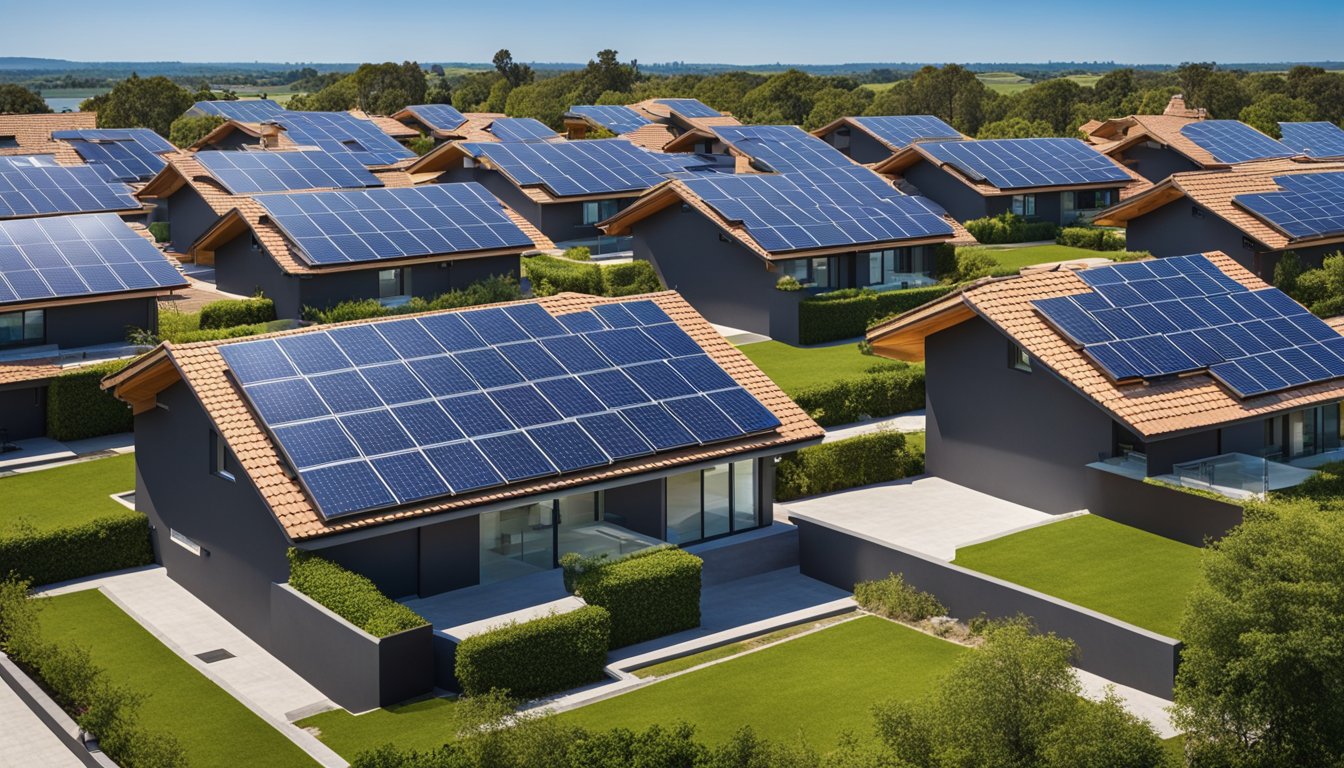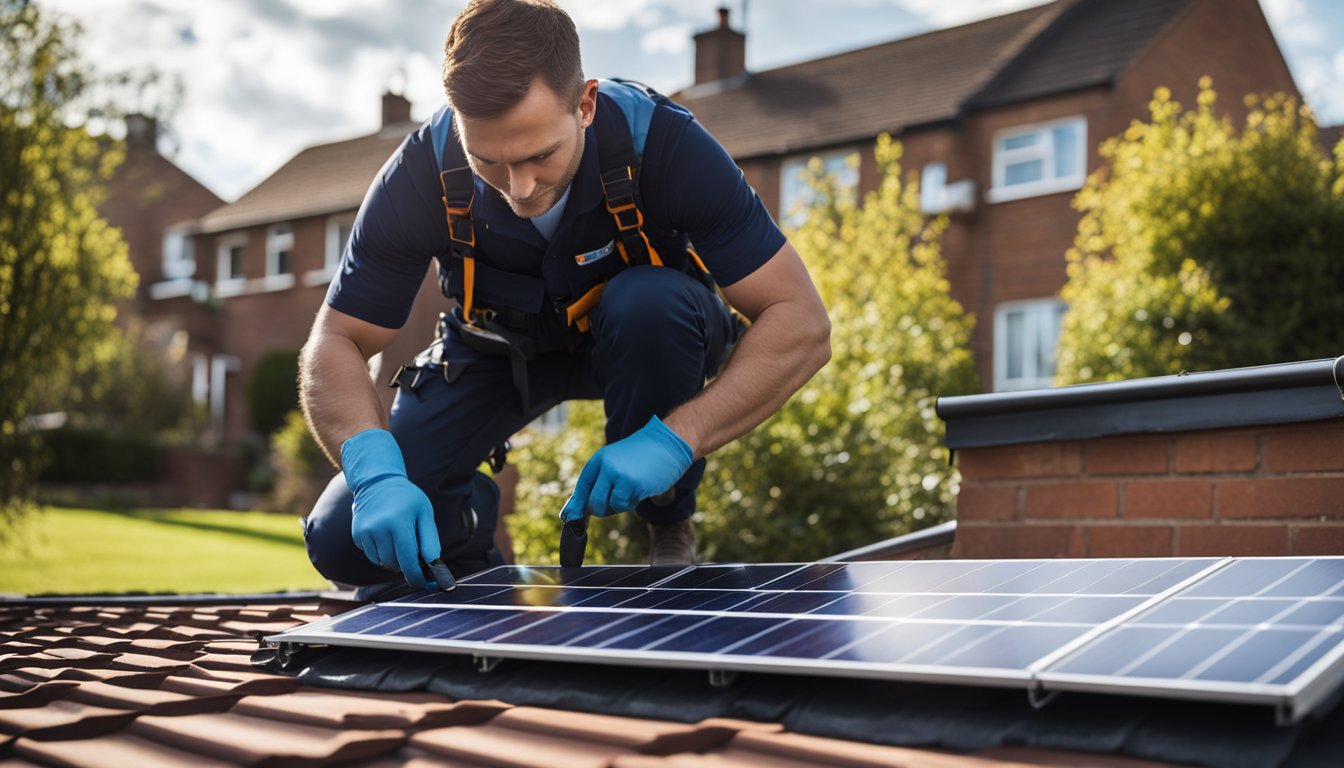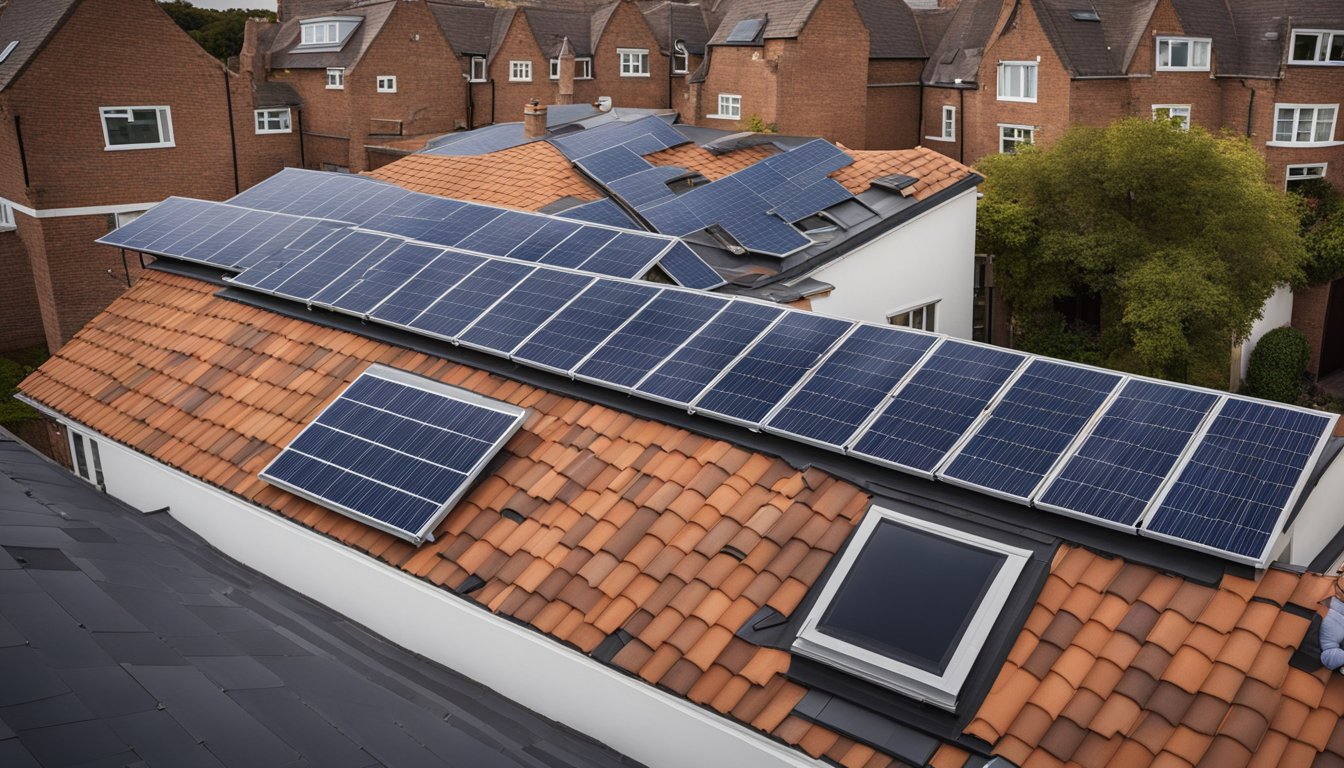Late updated: 22 Jan 2025 13:01
Written by: Eleanor Hartman
Emerging Solar Roof Tile Technologies In The UK: Innovations and Market Trends
As the demand for renewable energy solutions grows, solar roof tile technologies have emerged as a groundbreaking innovation. In the UK, these tiles offer a seamless blend of aesthetics and functionality, providing an energy-efficient alternative to traditional roofing. With their ability to generate electricity directly from sunlight, solar roof tiles appeal to homeowners looking for eco-friendly energy solutions.

The core technology behind solar roof tiles integrates photovoltaic cells into the tiles themselves, allowing them to function much like conventional solar panels but with a more visually pleasing appearance. In the UK, this technology is gaining traction due to its potential to reduce energy bills and contribute to sustainability goals. The sleek design of these tiles harmonises with existing rooftops, maintaining the architectural integrity of homes.
Installing solar roof tiles involves a more complex process than traditional panels, partly due to their novelty and design integration. Yet, they represent a significant investment in the future of energy independence, especially in a country committed to reducing carbon emissions. As we further explore this technology, it's clear that solar roof tiles are set to play a crucial role in the UK's move towards renewable energy.
Key Takeaways
- Solar roof tiles combine aesthetics with solar energy generation.
- They offer a sleek alternative to traditional solar panels.
- Adoption of solar roof tiles supports UK's sustainability goals.
Core Technologies and Innovations in Solar Roof Tiles
Solar roof tiles have revolutionised the way we harness solar energy. These tiles offer a seamless, integrated solution providing both functionality and aesthetic appeal. Key developments in their efficiency, durability, and design have made them a viable alternative to traditional solar panels.
Comparison to Traditional Solar Panels
Solar roof tiles differ significantly from traditional solar panels in both design and application. While traditional panels are mounted above existing roofs, solar tiles are integrated into the roofing system. This integration offers improved aesthetics and reduced wind resistance.
However, the efficiency of solar tiles can be slightly lower due to size and positioning constraints. Technology advances in monocrystalline and thin-film PV cells are helping to close this gap. Moreover, roof tiles are highly durable and weather-resistant, addressing concerns of longevity and wear.
Leading Solar Roof Tile Products
Several products have emerged as leaders in the solar roof tile market. Tesla's Solar Roof has gained notoriety for its sleek design and high-efficiency tiles. Another noteworthy product is GB Sol's range, which offers solar slates adaptable to traditional slate roofs. Meanwhile, Solecco's XO edge has focused on merging aesthetics with energy efficiency.
Each of these products leverages innovative photovoltaic technology while addressing regional architectural trends. The variety of available styles ensures compatibility with various housing types, making solar tiles a flexible option for diverse settings.
Efficiency and Energy Output
Efficiency remains a critical factor in the adoption of solar roof tiles. These tiles utilise advanced photovoltaic cells to convert sunlight into electricity. Products like Jackery's tiles, noted for their thin 0.13 mm crystalline silicon cells, promise up to 25% efficiency.
Although lower efficiency compared to some traditional panels, continued improvements in energy output are narrowing this disparity. Additionally, solar tiles offer efficient energy use by integrating directly into the building’s energy needs, reducing transmission losses and maximising overall system performance.
By focusing on enhancing solar panel efficiency, these innovations contribute to the broader adoption and scalability of solar technology.
Installing Solar Roof Tiles in the UK

Integrating solar roof tiles into UK properties requires careful planning. Installation involves several considerations, from blending with existing aesthetics to costs and ongoing maintenance.
Integration into Conservation Areas
Incorporating solar roof tiles in conservation areas demands special attention. These areas typically have restrictions to maintain visual integrity and architectural heritage. We must work closely with local authorities to ensure compliance.
Listed buildings often require more effort, as maintaining aesthetic appeal is crucial. Solar roof tiles offer an advantage by blending seamlessly with traditional roofing materials. This subtlety helps preserve the exterior appearance of historic homes while offering the benefits of renewable energy.
Financial Considerations
The initial cost of solar roof tiles in the UK can range between £11,000 and £13,500 for a standard home. Compared to traditional solar panels, this higher cost can be daunting. However, they bring substantial long-term savings through reduced electricity bills and potential revenue from schemes like the Smart Export Guarantee (SEG).
Additionally, installing solar technology can enhance property value due to growing interest in energy-efficient homes. While higher upfront costs exist, the investment pays off with lower energy bills and increased energy independence. Moreover, this sustainable energy generation contributes positively to reducing our carbon footprint, aligning with global environmental goals.
Installation and Maintenance
The installation process of solar roof tiles can be complex and time-consuming. Unlike traditional solar PV modules, these tiles must be integrated seamlessly with existing roofing. This often requires professional expertise to ensure proper installation and long-term performance.
While the installation time may vary depending on property size and complexity, it is crucial to factor in potential disruptions. Once installed, solar roof tiles require minimal maintenance compared to regular roof tiles. Routine checks ensure everything remains in optimal condition and continues to contribute towards a solar-powered home. Regular assessments help maximise energy efficiency and ensure consistent energy bill savings over time.
Frequently Asked Questions

Solar roof tiles are becoming more popular in the UK due to their integration of design and energy efficiency. They offer innovative options for generating solar power while maintaining architectural aesthetics. Below, we address common queries concerning solar roof tiles.
How do solar roof tiles compare to traditional solar panels in terms of efficiency and cost?
Solar roof tiles tend to be less efficient in energy conversion compared to traditional solar panels. They can also be significantly more costly, sometimes up to four times the price of standard panels. Despite the higher cost, many homeowners choose them for their aesthetic appeal, as they blend seamlessly with the roof structure.
What are the latest developments in solar roof tiles available in the UK market?
Recent advancements in the UK market focus on enhancing the efficiency and design of solar roof tiles. Monocrystalline and thin-film technologies are leading innovations, providing better energy output options. Improvements in material and installation methods have also contributed to their growing popularity.
Which companies are the leading providers of integrated solar roof tiles in the UK?
Several companies stand out as leaders in providing solar roof tiles in the UK. GB-Sol, XO Edge, and Solecco have emerged as prominent manufacturers, delivering durable and visually attractive solutions. Their offerings vary, focusing on different efficiency levels and design preferences for meetin' diverse homeowner needs.
What are the expected lifespans and warranties for solar roof tiles installed in the UK?
Typically, the expected lifespan for solar roof tiles spans 25 to 30 years. Many manufacturers provide warranties that range from 20 to 25 years, covering power output and product integrity. It is essential to verify warranty details with your provider as terms may vary based on the brand and tile model.
Can existing roofs be retrofitted with solar roof tiles, and what are the structural requirements?
Existing roofs can often be retrofitted with solar roof tiles, although structural assessments are crucial. The roof's condition and support system must accommodate the additional weight and installation process. Consulting with a professional can clarify the specific requirements and potential modifications needed for a successful installation.
What incentives or subsidies are available for homeowners looking to install solar roof tiles in the UK?
The UK government offers incentives such as the Smart Export Guarantee (SEG), where homeowners are compensated for excess energy supplied back to the grid. While upfront subsidies are limited, these earnings contribute financially over time. It’s advisable to stay informed about local council initiatives, as they may offer additional support for solar installations.